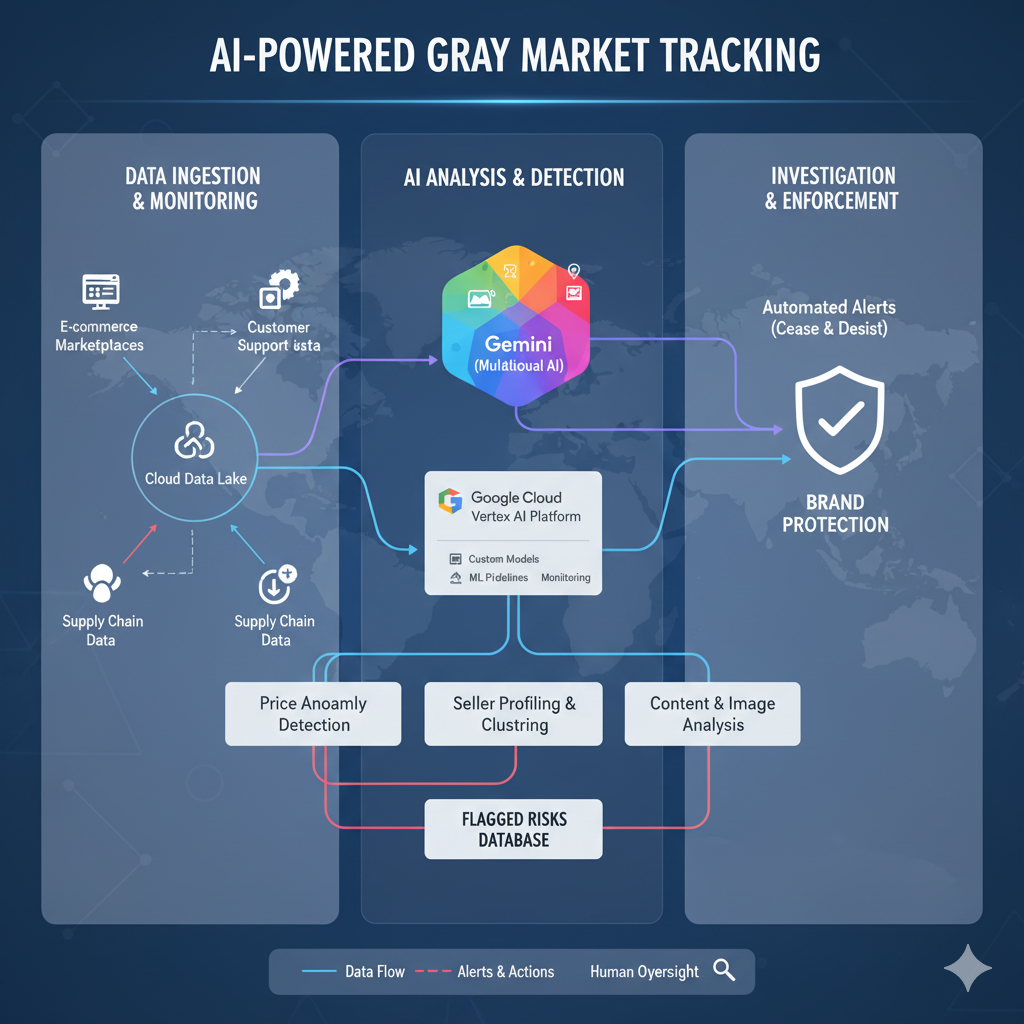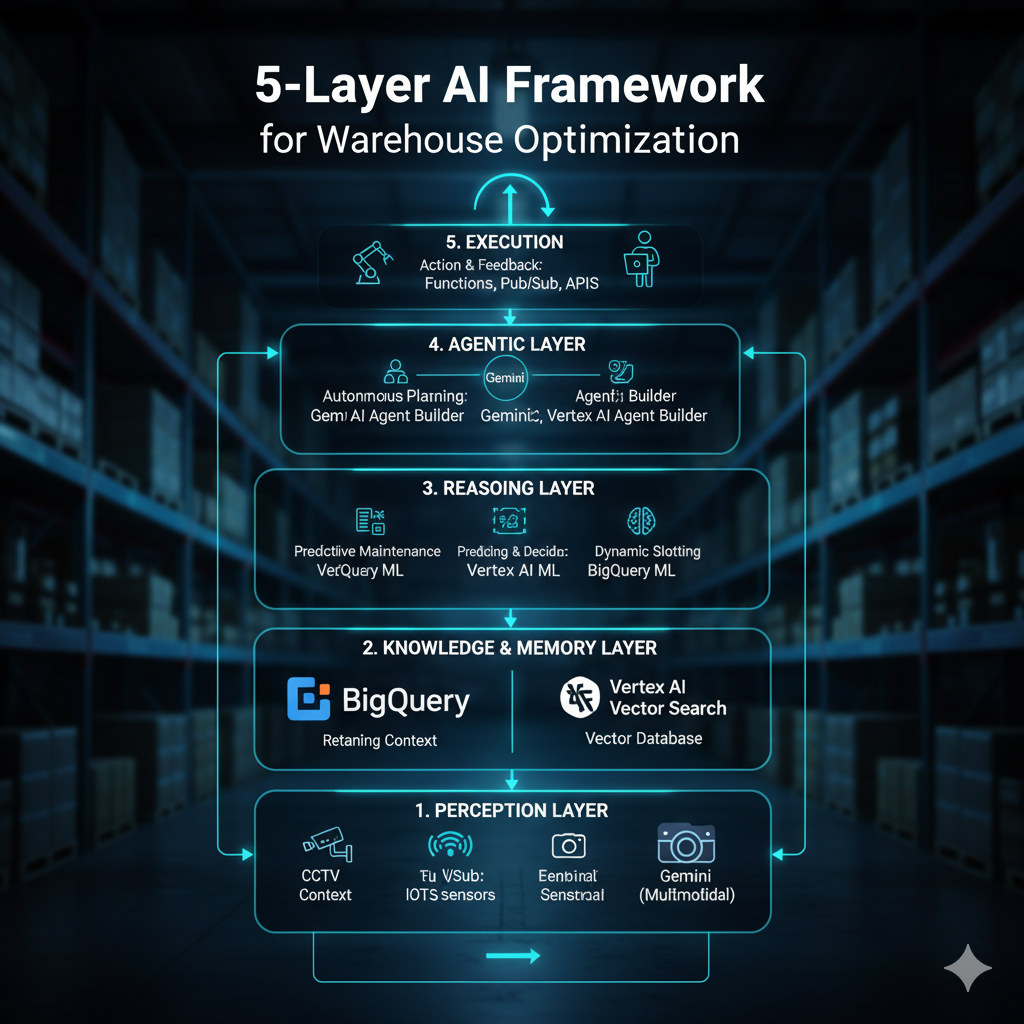I never thought I’d compare cutting-edge AI to my old-school warehouse shift supervisor, but here we are. When I got my first peek into a warehouse run by agentic AI, it felt more like observing a chess grandmaster than an automated conveyor belt. Boxes didn’t just move—they glided to the right place, almost anticipating what would go wrong next. Today, I’ll take you behind the scenes of this AI-driven revolution, with a few honest takes, hard truths, and stories you probably won’t hear at a tech convention.
Not Your Grandparent’s Automation: Agentic AI and Where It Fits In
When most people hear “warehouse automation,” the image that comes to mind is a floor of conveyor belts, barcode scanners, and perhaps a few robotic arms shuttling boxes from one end to another. These systems, while impressive, are fundamentally reactive. They follow pre-set rules, responding to triggers like a scanner reading a barcode or a sensor detecting a package. In other words, traditional warehouse automation is a bit like having a rookie on the floor—reliable within a narrow set of instructions, but not exactly known for creative problem-solving or adaptability.
Enter Agentic AI. This new breed of autonomous systems is transforming warehouse management by moving beyond simple automation. Instead of just following rules, agentic AI operates with intent-based models, making decisions that align with broader business goals. It’s the difference between a shift manager who understands the big picture and a temp who only knows how to follow a checklist. As MHI Solutions Magazine puts it:
'Agentic AI doesn’t just automate tasks—it actively drives warehouse operations toward business goals.'
Let me illustrate with a real-world example. A few months back, our warehouse was humming along as usual. Inventory was moving, orders were being picked, and the team was focused on their routines. Suddenly, the agentic AI system flagged a potential stockout on a high-velocity SKU—well before any human or legacy system would have noticed. The AI had detected an unusual uptick in demand, cross-referenced it with inbound shipment delays, and proactively reallocated stock from a slower-moving zone. By the time anyone on the floor realized there was an issue, the AI had already solved it. That was the moment I realized: this wasn’t just automation—it was autonomous reasoning in action.
So, what Agentic AI features set it apart from the old guard? Here are a few that stand out:
- Intent-Based Reasoning: Instead of reacting to every small event, agentic AI understands high-level objectives—like minimizing stockouts or optimizing labor allocation—and makes decisions to achieve those goals.
- Multi-Agent Coordination: These systems don’t operate in isolation. Multiple AI agents collaborate, sharing data and responsibilities to balance inventory, optimize picking routes, and even handle exceptions like damaged goods or blocked aisles.
- Self-Correcting Actions: When disruptions occur—say, a misrouted pallet or a missing SKU—agentic AI doesn’t just flag the problem. It investigates, adapts, and corrects the issue autonomously, reducing the need for human intervention.
Research shows that agentic AI enables autonomous decision-making and task execution, dramatically improving operational efficiency in warehouse management. These systems are not just about doing things faster—they’re about doing the right things, at the right time, with minimal oversight. It’s a shift from automation as a tool, to AI as a trusted partner in the warehouse ecosystem.
Smarter Than Luck: How Agentic AI Masters Inventory (Even When Life Gets Messy)
There’s something almost uncanny about watching Inventory Control AI in action. Unlike traditional systems that simply react to triggers—think reorder points or static safety stock—agentic AI takes inventory management to a new level. It doesn’t just watch; it forecasts, adapts, and acts, often before you even realize there’s a problem. In the unpredictable world of warehouse operations, that difference is everything.
Let’s start with the basics. Agentic AI for Inventory Control is not just another layer of automation. It’s a system designed to understand high-level goals—like minimizing stockouts or balancing overstock—then autonomously orchestrate the steps needed to achieve them. The result? Inventory levels that rarely spiral out of control, even after an unexpected surge in demand or a supply chain hiccup.
Take replenishment automation, for example. In the past, we relied on scheduled reports and manual checks. Now, with Autonomous Stock Management powered by agentic AI, replenishment is a living, breathing process. The AI continuously ingests real-time data, recalculates optimal reorder points, and triggers purchase orders or internal transfers without human intervention. It’s not magic; it’s perpetual recalibration, driven by analytics and intent-based models.
One of the most striking real-world impacts I’ve seen is in overstock management. Imagine a scenario where a sudden shift in demand leaves a section of the warehouse with excess inventory. Traditionally, this would mean a scramble—emails, phone calls, maybe even a few heated debates. But with Inventory Control AI, the system identifies the imbalance, reroutes pallets to where they’re needed most, and updates stock levels across the network in real time. The speed and precision are, frankly, a little addictive to watch.
There’s a personal satisfaction in seeing AI adjust ‘days of stock’ calculations faster than any human team I’ve worked with. It’s a subtle thing, but it changes the rhythm of warehouse life. Instead of chasing errors, you’re free to focus on higher-level strategy—because the AI is already handling the exceptions, correcting errors, and even updating its own schema as new patterns emerge. These self-learning schema updates mean the system gets smarter with every cycle, adapting to seasonal trends, supplier quirks, and even those rare black swan events.
Research shows that agentic AI supports multi-agent collaboration to optimize inventory storage, retrieval, and error correction autonomously. As XenonStack puts it:
'Agentic AI supports multi-agent collaboration to optimize inventory storage, retrieval, and error correction autonomously.'
This collaborative intelligence is what sets agentic AI apart. Multiple AI agents can coordinate replenishment, stockout prevention, and safety stock calculation, all while dynamically reprioritizing tasks as conditions change. If a pallet is misrouted or a SKU goes missing, the system investigates and resolves the exception—often before anyone on the floor even notices.
In practice, this means inventory control is no longer a game of catch-up. With AI for Inventory Control, warehouses can finally achieve a level of calm—almost a kind of operational zen—even when life gets messy.
The Chaos Whisperer: How Agentic AI Handles Warehouse Curveballs
Every warehouse manager knows the feeling: you’re halfway through your lunch break when your phone buzzes—aisle 7 is blocked, a pallet’s been misrouted, and someone just reported a batch of damaged goods. In the old days, these disruptions would trigger a frantic scramble. Traditional automation, for all its speed, tends to freeze when reality throws a curveball. It’s rule-bound, not resilient. But with agentic AI, the game changes entirely. Suddenly, chaos isn’t a crisis—it’s just another variable to manage.
Agentic AI brings Real-Time Adaptability to warehouse operations. Instead of waiting for human intervention, these systems detect disruptions as they happen. Imagine a forklift breaking down in a critical pathway. Rather than sending an SOS to the warehouse manager, the AI instantly reroutes picking tasks, reallocates staff, and updates delivery schedules. The work continues, almost as if nothing happened. As one logistics manager told me, ‘Our AI doesn’t panic. It adapts faster than my best staff.’
This is the heart of Exception Handling Automation. Where old-school systems would grind to a halt, agentic AI improvises. It’s not just about following a script; it’s about understanding intent and context. If a SKU goes missing, the AI investigates—cross-referencing inventory logs, scanning recent movement data, and even coordinating with other agents to locate the product or trigger a replenishment. Damaged goods? The system flags the issue, isolates the affected inventory, and adjusts picking routes on the fly. There’s no need for a human to step in unless the AI truly hits a wall.
‘Autonomous warehouse management with agentic AI can handle disruptions by investigating and resolving exceptions without human input.’ – Smart-IS
Let’s talk about what this means in practice. Picture a typical day: a blocked aisle, a misrouted pallet, and a sudden labor shortage. With agentic AI, these aren’t emergencies—they’re just data points. The system’s Self-Correcting AI capabilities kick in, dynamically reprioritizing tasks and reallocating resources. If a picker is delayed, the AI shifts assignments to maintain workflow. If a product is misplaced, it launches an autonomous search, leveraging real-time analytics and multi-agent collaboration to resolve the issue without a single call to the manager.
Research shows that this level of Real-Time Disruption Management is already transforming warehouses. Companies piloting agentic AI report fewer workflow stoppages and faster recovery from unexpected events. There’s a certain peace of mind that comes with knowing your operation won’t grind to a halt just because something went wrong. As a manager, you can actually finish your lunch—confident that the AI is handling the chaos, quietly and efficiently, in the background.
In the end, agentic AI isn’t just about automation—it’s about resilience. It’s the difference between reacting to problems and anticipating them, between firefighting and achieving true operational zen.
From Route Roulette to Strategy: AI and the Art of Picking Optimization
If you’ve ever watched a warehouse picker zigzag through aisles, you know the process can feel oddly like a board game. Traditional Warehouse Management Systems (WMS) rely on static rules and fixed paths—think of it as rolling dice and following the squares. It’s predictable, but not always smart. The reality is, warehouses aren’t static. Orders spike, products move, and priorities shift in real time. That’s where agentic AI enters the scene, transforming Warehouse Picking Route Optimization from a game of chance into a game of strategy.
Let me share a quick story. Not long ago, our team faced a sudden, unexpected surge in online orders. The old WMS, with its rigid routing, buckled under pressure. Pickers were sent on crisscrossing routes, doubling back for missed SKUs, and wasting precious minutes. It was clear: static task assignment simply couldn’t keep up. The weak link was exposed, and it was costing us efficiency.
Enter agentic AI. Unlike traditional automation, which simply follows rules, agentic AI systems use intent-based models to formulate high-level goals and dynamically re-prioritize tasks. As IBM Think puts it:
‘Agentic AI systems use intent-based models to formulate high-level goals and dynamically re-prioritize tasks.’
With agentic AI, Warehouse Picking Route Optimization becomes proactive. When that order spike hit, the system didn’t just react—it anticipated. Pick lists were reprioritized on the fly. Staff were rerouted in real time, minimizing overlap and legwork. The AI evaluated not just the current state of the warehouse, but also what was likely to happen next—like a chess player thinking several moves ahead.
This is where AI Task Reprioritization shines. Instead of assigning tasks based on yesterday’s logic, agentic AI leverages Autonomous Reasoning to adapt to the warehouse’s living, breathing conditions. If a picker is delayed by a blocked aisle, the system reroutes others to avoid bottlenecks. If a high-priority order drops in, it reshuffles the queue, ensuring urgent items are picked first without derailing overall efficiency.
The impact is tangible. Less backtracking. Fewer wasted steps. More orders fulfilled on time. And, perhaps most importantly, a workforce that isn’t constantly firefighting, but instead working in sync with a system that understands the bigger picture.
Research shows that agentic AI-driven Proactive Warehouse Systems can autonomously manage disruptions, optimize labor allocation, and even investigate exceptions—like misrouted pallets or damaged SKUs—without human intervention. This level of real-time adaptability is a game changer for modern logistics.
In short, agentic AI transforms warehouse picking from a reactive scramble to a coordinated, strategic operation. The difference is night and day—and it’s only the beginning of what’s possible with true autonomous reasoning in the warehouse.
Beyond the Hype: What’s Hard About Agentic AI—and Why It’s Worth It
Let’s be honest—agentic AI in warehouse management sounds almost too good to be true. The promise of Autonomous Warehouse Management is everywhere: self-healing operations, near-perfect inventory accuracy, and managers who finally get to focus on strategy instead of putting out fires. But as someone who’s spent time on both the tech and operations side, I can tell you that getting agentic AI to actually work in a real warehouse is part science, part stubbornness, and a whole lot of learning on the fly.
First, let’s talk about the challenges implementing agentic AI. Integration is rarely plug-and-play. Most warehouses run on a patchwork of legacy systems, custom scripts, and manual workarounds. Connecting agentic AI to these environments is a marathon, not a sprint. Every data source—whether it’s an old ERP, a barcode scanner, or a new IoT sensor—needs to be mapped, cleaned, and validated. And here’s the kicker: agentic AI is only as good as the data it ingests. If your inventory counts are off, or your SKUs are mislabeled, the AI will make decisions that amplify those errors, not fix them.
Then there’s the matter of exception handling. Traditional automation flags problems for humans to solve. Agentic AI, by contrast, is supposed to solve those problems on its own. That means building systems that can not only detect a misrouted pallet or a damaged SKU, but also investigate, reason, and execute corrective actions—without waiting for a supervisor’s approval. This level of autonomy requires robust, real-time analytics and a willingness to let the AI make mistakes (and learn from them) along the way.
But maybe the hardest part is the cultural shift. Imagine a warehouse where new hires shadow the AI, not the human supervisor. It sounds wild, but as agentic AI becomes the operational brain, the old hierarchies start to blur. Managers have to trust the system’s recommendations, even when they go against gut instinct. Floor staff need to adapt to workflows that change on the fly, driven by real-time analytics rather than static schedules. The transition isn’t always smooth—and it’s not for the faint of heart.
Despite these hurdles, the payoff is real. Research shows that leading companies are piloting agentic AI using drones, RFID systems, and advanced analytics to achieve near-perfect inventory accuracy and operational autonomy. As Workday puts it,
'Leading companies are piloting agentic AI using drones, RFID systems, and advanced analytics to achieve near-perfect inventory accuracy.'
When it works, agentic AI delivers more than just efficiency. It creates a kind of operational zen: fewer surprises, less stress, and more time for managers to focus on growth. Pricing for these solutions varies, but the value—measured in accuracy, resilience, and peace of mind—can be transformative. The road to AI-Driven Warehouse Analytics isn’t easy, but for those willing to tackle the hard stuff, the rewards are well worth the effort.
TL;DR: Agentic AI in warehouses isn’t about shiny gadgets—it’s about real-world efficiency, fewer headaches, and a new standard for responsive operations. Prepare for a future where your warehouse thinks for itself.


